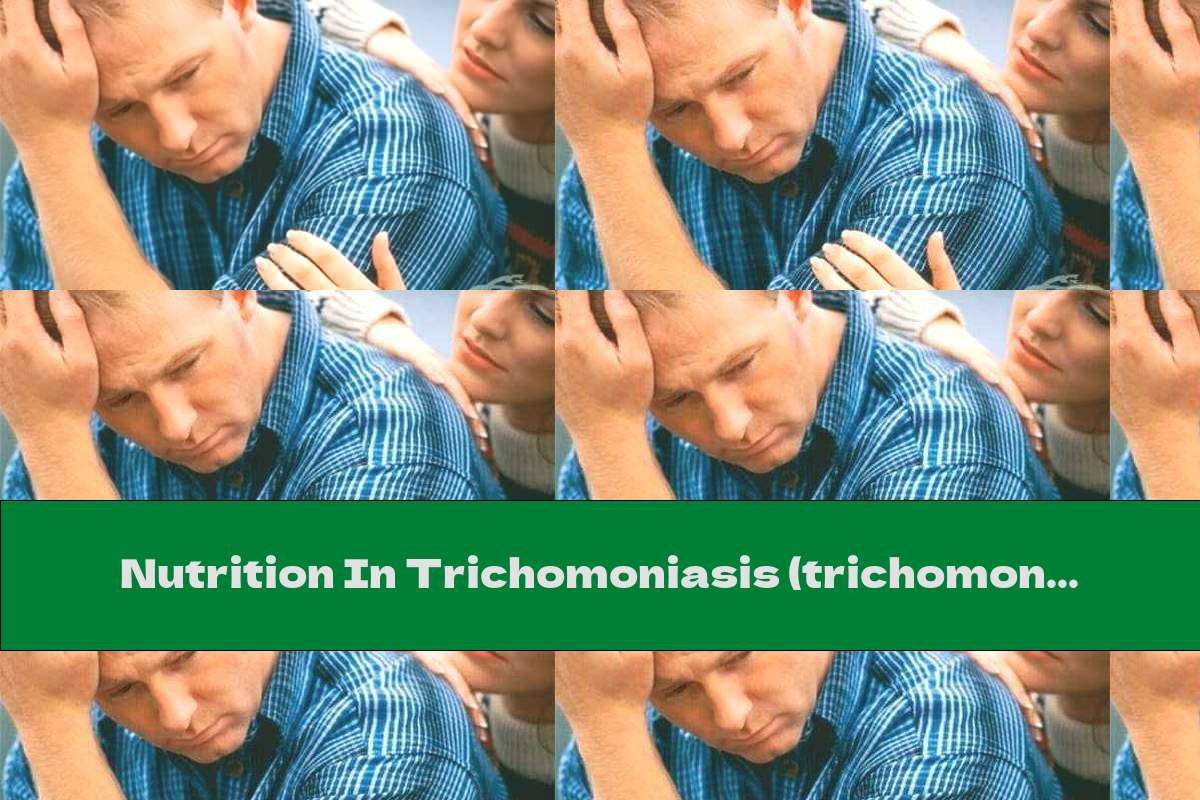Nutrition In Trichomoniasis (trichomoniasis)
 Author: Joe Fowler
Time for reading: ~1
minutes
Last Updated:
August 08, 2022
Author: Joe Fowler
Time for reading: ~1
minutes
Last Updated:
August 08, 2022

CHAPTERS (Table Of Contents)
In this article, learn more about Nutrition In Trichomoniasis (trichomoniasis). Nutrition in trichomoniasis (trichomoniasis).
Trichomoniasis is a disease that affects the genitourinary system and is transmitted through sexual contact. Infection is possible through poor personal hygiene, for example, using shared towels, towels with an infected person, and wearing other people's underwear. There is also a risk of mother-to-child transmission at birth.
The cause is Trichomonas vaginalis. The disease is dangerous for both sexes: in women the bacterium inhabits the vagina, and in men - the prostate, urethra and seminal vesicles.
Useful foods for trichomoniasis
The infection develops against the background of weakened immunity, beriberi and hormonal disorders, so it is necessary to increase the body's defenses and normalize hormone levels. This is largely influenced by the products we consume.
The microflora of the genitals is severely affected in the presence of such a health problem. To ensure a normal environment for the mucosa, the menu should include more dairy foods (kefir, sour cream, whey, yogurt, yeast). They contain beneficial bifidobacteria and lactobacilli, which not only restore the damaged microflora, but also help absorb the vitamins A and E needed to regenerate the body.
For faster recovery, food should be varied and rich in vitamins.
To get the insufficient amount of vitamin B, to consume hard cheeses, mushrooms, liver, nuts, legumes, garlic.
Vitamins A and E are found in broccoli, dried fruits (especially apricots, prunes), spinach, sweet potatoes, sorrel, wild garlic, seaweed.
Lemons, blackcurrants, oranges, kiwis, sea buckthorn, strawberries (garden and forest) are all very suitable for strengthening immunity - they are all rich in vitamin C.
To balance the hormonal picture to take polyunsaturated fatty acids, calcium, zinc, magnesium. These substances are obtained by consuming: fish (salmon, trout, tuna, cod), shrimp, oysters, buckwheat, peas, oatmeal, turkey, chicken and goose meat, mustard seeds.
Dangerous and harmful foods for trichomoniasis:
- alcohol and sweet carbonated beverages;
- large quantities of sweet, salty and smoked products;
- pasta (especially with yeast content);
- non-homemade sauces (mayonnaise, ketchup and others);
- products containing additives with code E (colorants, swelling agents);
- moldy foods (for example, some types of cheese);
- fast food and semi-finished products.
The listed harmful foods provoke the development of Trichomonas vaginalis, as well as other bacteria and fungi, which slow down the treatment, prolonging its duration and increasing the symptoms.
- Nutrition in cervicitis
Related Articles
- The Power of Continuous Nutrition: Benefits, Strategies, and Meal Ideas
- Childhood Nutrition: Importance, Key Nutrients, Healthy Habits & Recipes
- The Ultimate Guide to Boiled Cod: Nutrition, Benefits, and Recipes
- The Ultimate Guide to Carbohydrates in Nutrition
- Nutritional Benefits of Winter Salad with Shrimp: Recipes and Tips